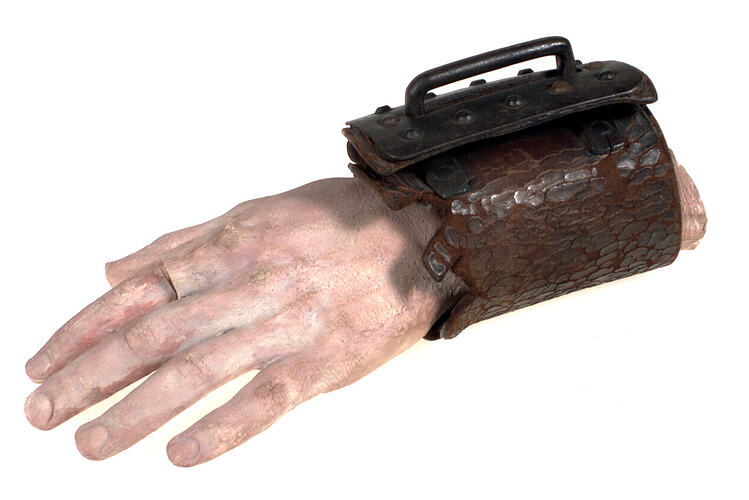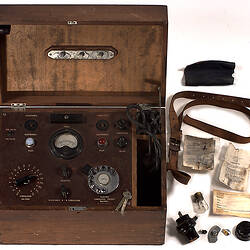Summary
Wrist shackle used at 'Yarra Bend Lunatic Asylum' for chaining patients to the wall. Referred to in Yarra Bend Casebook (1848-54) as "handcuffs on the wall".
The term 'lunatic asylum' was in official use in Victoria until 1903.
Physical restraint was an acceptable and routine technique in the management of mentally unwell patients (at the time described as 'lunatics') in colonial Victoria. Having been certified insane and admitted to the asylum, patients were regarded as merely one of a number of forms of deviants from which Victorian society should be protected by their segregation. In the early days of the colony, the concept of offering therapy for those afflicted with a mental illness did not exist, and physical restraint was employed as a custodial measure, consistent with the penal origins of the colony.
Physical Description
Wrist shackle is a broad, wrap-around brown leather bracelet with a flat piece of steel with a slot in it, rivetted on one end and on the other a hollow, oblong-shaped steel handle protruding at right angles, which fits through the slot and would be locked in place with a padlock. Chains would also be attached to this handle. Scallops are cut along the edge of the bracelet, probably to ease chafing of the wearer's wrist. Shackle displayed on a pink, plaster-cast of a hand and wrist.
More Information
-
Collection Names
-
Collecting Areas
-
Acquisition Information
Donation from Yarra Bend Mental Asylum, Office of Psychiatric Services, Jan 1985
-
Place & Date Used
Yarra Bend Mental Asylum, Fairfield, Greater Melbourne, Victoria, Australia, 1848-1860
-
Classification
-
Category
-
Discipline
-
Type of item
-
overall dimensions
12 cm (Length), 11 cm (Width), 26 cm (Height)
-
References
Card displayed with exhibit. History of Medicine, vol.3, no.1, 1972. For further reference, see article in History of Medicine, vol.3, no.1, 1972.
-
Keywords
Hospitals, Mental Health, Mental Health Institutions, Psychiatric Hospitals, Psychiatric Institutions, Psychiatric Services, Security Equipment

